






Name:
Class: School:

Academic Authors: Sneha Sharma, Chandni Bhargava, Bhawna Bisht
Design & Production: Amisha Gupta, Bhavna Tripathi, Satish, Mangal Singh Rana, Vishesh Agarwal
Project Lead: Sneha Sharma
VP, Learning: Abhishek Bhatnagar
All products and brand names used in this book are trademarks, registered trademarks or trade names of their respective owners.
© Uolo EdTech Private Limited
First edition 2025
Second edition 2026
This book is sold subject to the condition that it shall not by way of trade or otherwise, be lent, resold, hired out, or otherwise circulated without the publisher’s prior written consent in any form of binding or cover other than that in which it is published and without a similar condition including this condition being imposed on the subsequent purchaser and without limiting the rights under copyright reserved above, no part of this publication may be reproduced, stored in or introduced into a retrieval system, or transmitted in any form or by any means, electronic, mechanical, photocopying, recording or otherwise, without the prior written permission of both the copyright owner and the above-mentioned publisher of this book.
Book Title: Dawn Numeracy Skillbook Level B
ISBN: 978-81-980375-3-4
Published by Uolo EdTech Private Limited
Corporate Office Address:
91Springboard, 3rd Floor
145, Sector 44, Gurugram, Haryana 122003
CIN: U74999DL2017PTC322986
Printed by: Printpro Solutions
Illustrations and images: www.shutterstock.com, www.stock.adobe.com and www.freepik.com
All suggested use of the internet should be under adult supervision.

elcome to DAWN, our comprehensive series for Early Childhood Education, meticulously crafted to align with the guidelines of the Foundational Stage as outlined in the National Education Policy (NEP) 2020 and the National Curriculum Framework for the Foundational Stage (NCF-FS) 2022.
DAWN offers a rich blend of interactive and activity-based content to support each child’s physical, emotional, intellectual and spiritual growth. Our approach ensures that learning is enjoyable and meaningful, and caters to every child’s interests and abilities.
Inspired by the Panchakosha Framework, DAWN offers a thoughtfully curated curriculum designed to nurture each child’s physical, emotional, intellectual and spiritual growth, and create engaging and meaningful learning experiences for all children and cultivate a lifelong love for learning.
1. Physical Development
Through movement-based activities, action rhymes, gross and fine motor skill, exercises, yoga and simple meditation practices, children enhance their coordination, balance and self-regulation.
2. Social and Emotional Growth
Discussions, role-plays, games, storytelling and collaborative activities encourage empathy, cooperation, self-expression and social awareness.
3. Intellectual Growth
A structured, age-appropriate progression from concrete to abstract concepts builds strong problem-solving, logical thinking and cognitive skills.
4. Spiritual and Moral Development
Stories, rhymes and reflective discussions teach values such as kindness and honesty. Yoga and meditation help children stay calm, focused and happy.
5. Sensory and Experiential Learning
Activities in art and craft, STEM-based explorations, interactive games and fun activities ensure hands-on engagement, creativity and imaginative thinking.
The DAWN curriculum is not merely a series of lessons, but a journey of discovery, growth and joy. The package comes with digital content, provided free of cost, to ensure a seamless and holistic learning experience for children. By providing a nurturing and stimulating environment, DAWN lays the foundation for future success—preparing children not just for school, but for life.

Thank you for embarking on this educational journey with us. Together, we can make the DAWN of early childhood education a bright and promising start for every child.


The table below helps us understand how the Panchakosha elements have been incorporated into the DAWN Curriculum:


The National Education Policy (NEP) 2020 represents a transformative shift in the country’s education system. It aims to establish a more holistic, dynamic and multidisciplinary approach to learning. NEP 2020 emphasises the development of conceptual understanding, skills, values and competencies aligned with the demands of the 21st century, while also honouring India’s rich cultural heritage.
UOLO is fully committed to realising the vision of NEP 2020 by meticulously following its recommendations. Below is the list of icons that are spread across the books to showcase DAWN’s adherance to the values rooted in the NEP and NCF.


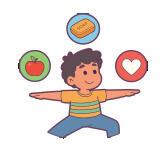









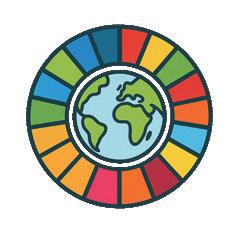

DAWN is an activity-based learning programme covering all areas of Early Childhood Education. It includes textbooks in English, Maths, General Awareness, STEM, Art and Craft, Phonic and Rhymes & Stories, along with lesson plans and resources to support teachers. Digital tools like animated videos, phonics songs and interactive exercises further enrich classroom learning. Assessments

























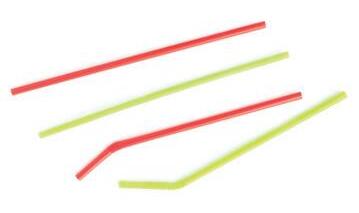

















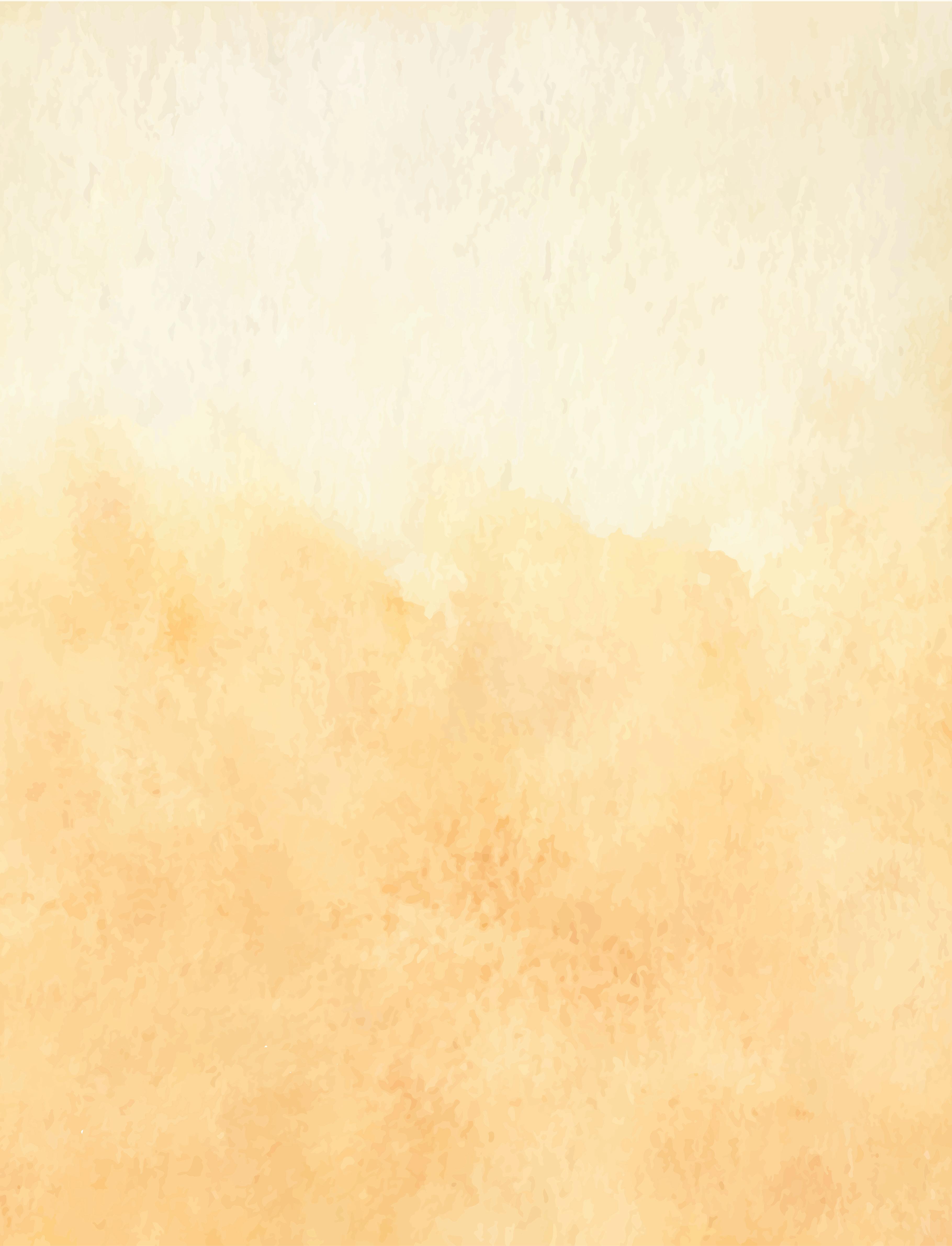


The book curriculum builds strong thinking and problem-solving skills through a step-by-step approach. The Skillbook begins with pre-number ideas like big/small and more/less, then moves to number recognition, counting and value. The Workbook provides practice for each concept to strengthen learning.
Child-friendly rhymes, stories and activities add a fun element to learning. The Let’s Talk section encourages children to listen, retell, ask questions and express their ideas. Teacher Tip provides guidance to make real-life connections and enrich concept delivery in the classroom.













Digitally powered and application based

Tell children that mango is our national
Let's Talk 1.
After each concept, the fun continues with the Let’s Do It! section— featuring simple, engaging worksheets to help children trace numbers and apply their learning. QR codes link to friendly concept videos, adding a layer of digital learning to make understanding even more exciting!
The book engages multiple senses through bright visuals, catchy rhymes, simple stories and hands-on activities. Fun Zone tasks such as mazes, puzzles and sticker activities help build thinking and motor skills in an enjoyable way.







The Learning Outcomes sheet highlights the key skills and concepts covered in the book and helps track each child’s progress. Special icons throughout the book reflect strong alignment with the NEP and NCF, ensuring a well-rounded learning experience.










Look at the two balls. Ball A is the same as Ball B.

Ball A

Ball B
Look at these two balls. Ball C is a different from Ball D.

Ball C
Let us see more examples of same and different.



D



Same Same Different Different








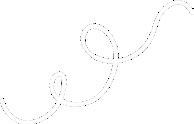
Tick (✓) the ball that is the same as the ball in the box.




Circle the one that looks different in each group.









Engage children in games or activities that involve sorting or matching objects based on similarities and differences.













An elephant is big.
A cat is small.
A football is big. A cricket ball is small.








Tick (✓) the big ladybird.


Tick (✓) the small gift.







A big elephant, and a small ant, A big tree, and a small plant. A big bus, and a small van, A big ball, and a small can. Some are big and some are small, Let us learn about them all!











The giraffe is tall.




A waterbottle is tall.

Show the difference between tall and short by comparing two children or things in the classroom.






The dog is short.

A glass is short.









Help the painter paint the wall. Colour the tall ladder.













The snake is long.

This pencil is long.
This train is long.
The worm is short.

This pencil is short.
This car is short.








Paste a short ribbon below the long one.



Look at the pictures. Tick (✓) the long object in each set.













A circle is round. It has no sides or corners. Trace the dots.
We can see a circle in these objects. Say their names aloud.





I am a Circle I am a circle, Big and round. I have no corners, I roll around.









Take a bottle cap, dip it in paint and stamp circles in the space below.


Paste stickers of the objects that look like a circle. (Use the sticker sheet.)









Connect the dots to match each ladybird to each leaf.























Number one, tickle your tum.
Number two, just say, ‘Boo!’
Number three, touch your knee.
Number four, touch the floor.
Number five, do a dive.
Number six, wiggle your hips.
Number seven, jump to heaven.
Number eight, stand up straight.
Number nine, walk in a line.
Number ten, do it all again.
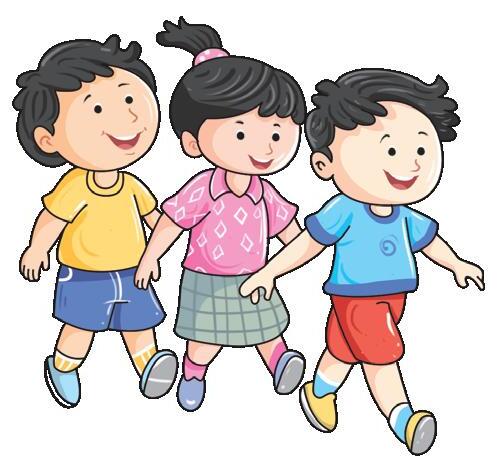




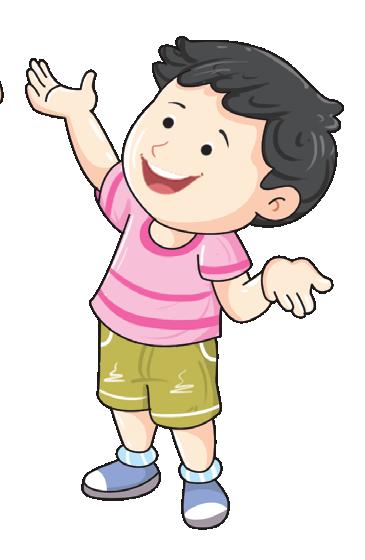




Use body movements such as clapping, jumping or tapping while singing the number rhyme in a group.








Trace number 1 with your finger. Then trace it with crayons in different colours.
1









Trace number 2 with your finger. Then trace it with crayons in different colours.











Trace number 3 with your finger. Then trace it with crayons in different colours.









Count and write.
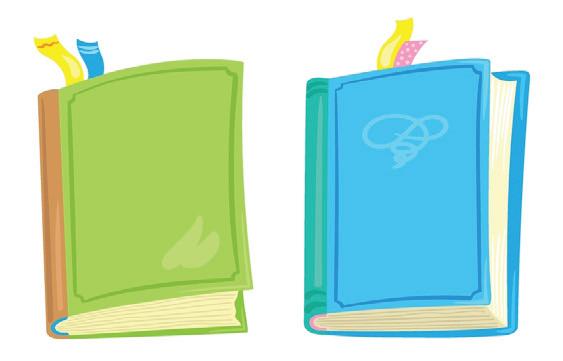



Connect the dots from 1 to 3 to complete the picture.
Colour the triangle.

Cross () out the incorrect number. 1 2 2 2 2 2 2 2 3 3 3 3 3 3 3










Trace number 4 with your finger. Then trace it with crayons in different colours.









Trace number 5 with your finger. Then trace it with crayons in different colours.











Count and write.
















(Use the sticker sheet.)

































Count the children. Paste caps on their heads.

































































1








Write the missing numbers.



4








Draw the correct number of apples on the trees.


3







4

TEACHER TIP
1
5

2
Say a number and ask the children to find that many objects in the classroom.









This is the front of the palm.

This is the front of the mobile phone.

This is the back of the palm.

This is the back of the mobile phone.








Circle the back side of each thing.









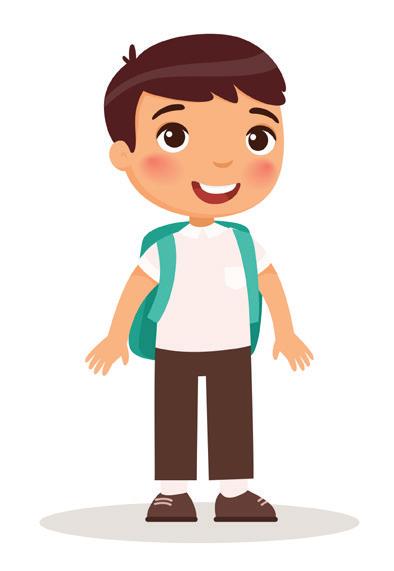








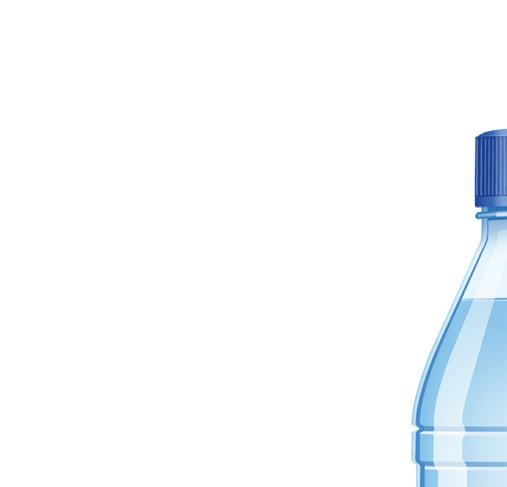



The waterbottle is heavy.

The pumpkin is heavy.

Tell children that mango is the national fruit of India.



The pencil is light.
The mango is light.









Tick (✓) the things that are heavy. Cross (✗) the things that are light.

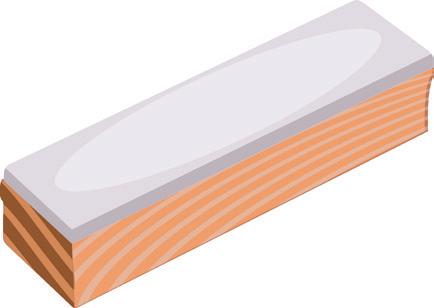
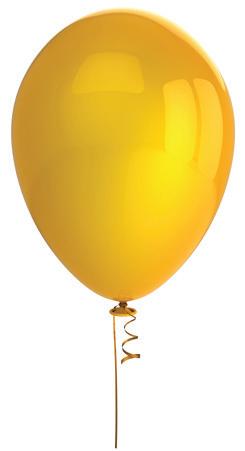



Paste the stickers in the correct boxes below. (Use the sticker sheet.)












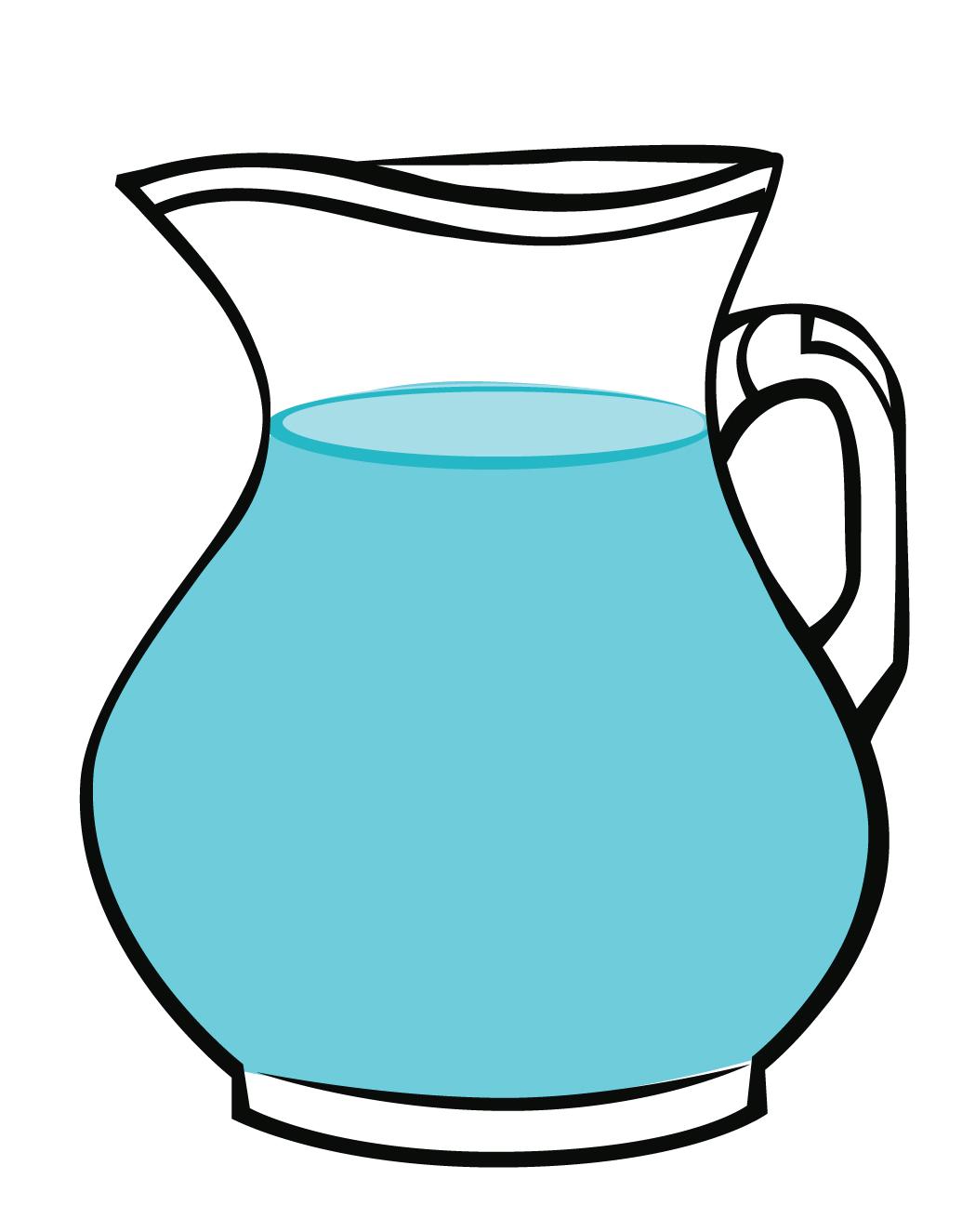

This jug has more water. This jug has less water.
This basket has less eggs. This basket has more eggs.









Colour one bucket to show more water. Colour the other bucket to show less water.







Encourage children to save water and not waste it.










This crayon box is full.


This crayon box is empty.

This basket is full. This basket is empty.









Paste stickers of mangoes to fill the left basket. Leave the right basket empty. (Use the sticker sheet.)





Tick (✓) the glass filled with juice. Cross (✗) the empty glass. full empty









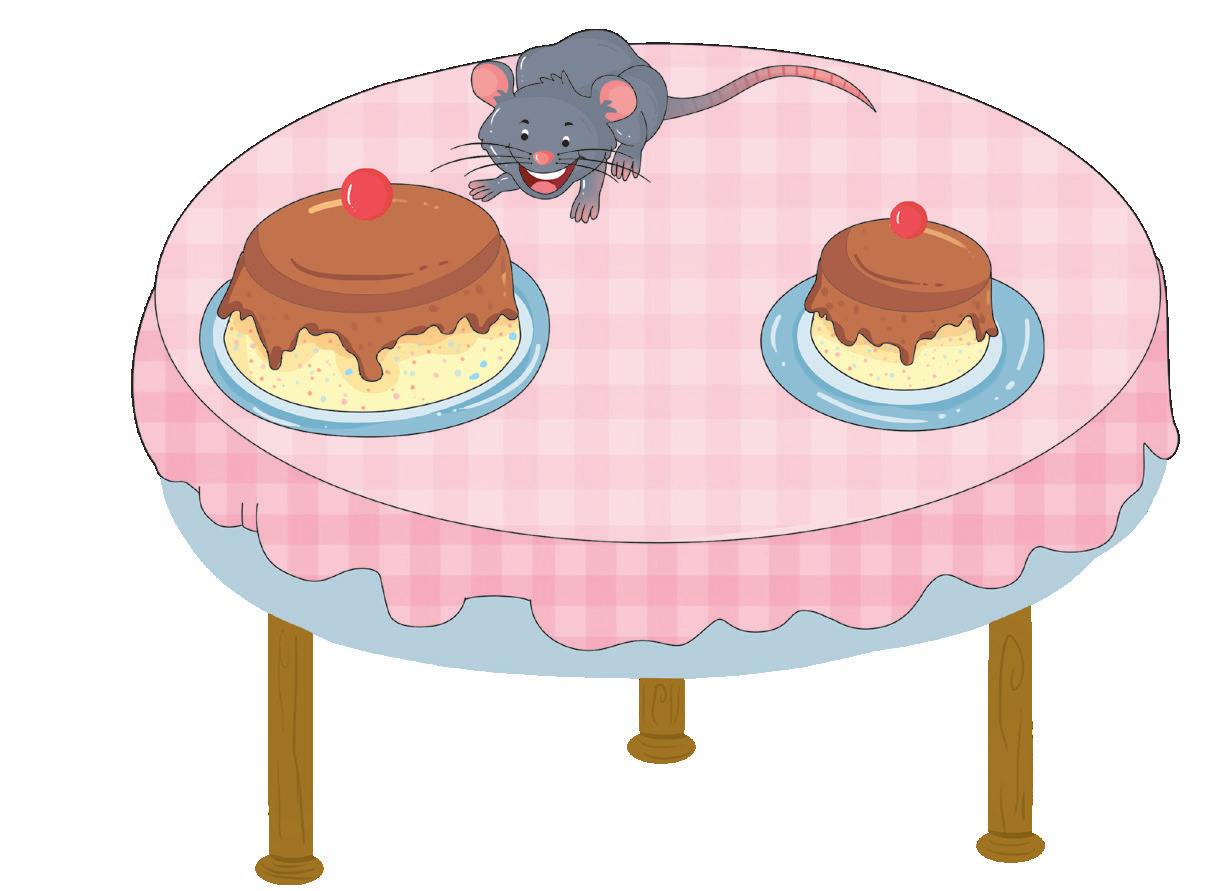

Anjali sees the rat and screams.


A small rat sees two cakes on a table. It goes to eat the bigger one.

The rat tries to hide under a book. But the book is heavy.








It tries to hide under the dog’s fluffy tail.


But the rat’s tail is long. It cannot hide its long tail.


Anjali chases the rat out of the house. The poor rat could not eat the cake.

Let's Talk
1. Which cake did the rat choose to eat?
2. Why could the rat not hide its tail?
3. Can you think of something else that is heavy?








A square has four sides and four corners. All its sides are the same length. Trace the dots.
We can see a square in these objects. Say their names aloud.


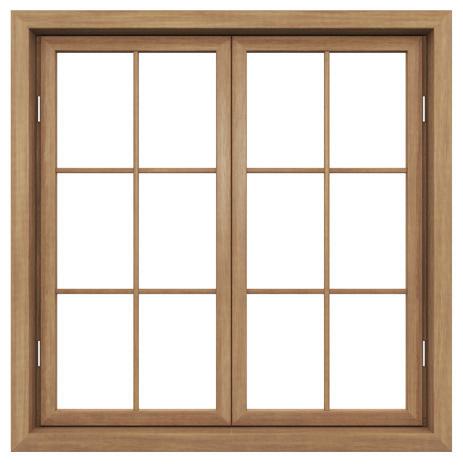
frame window
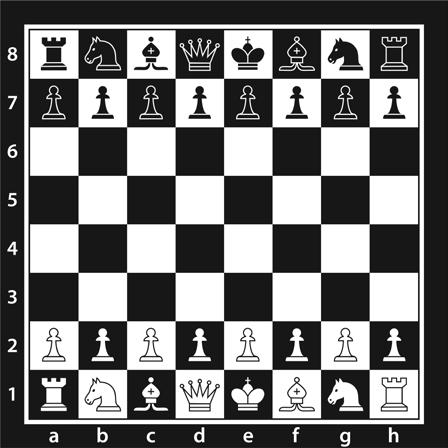


I am a Square I am a shape, Square is my name. My four sides are All the same.









Look at the picture on the side. Dip your thumb in colours and make prints on all the sides of the square.




Paste stickers of the objects that look like a square. (Use the sticker sheet.)










Trace number 6 with your finger. Then trace it with crayons in different colours.
1









Trace number 7 with your finger. Then trace it with crayons in different colours.











1
Trace number 8 with your finger. Then trace it with crayons in different colours. 8






Count and write.





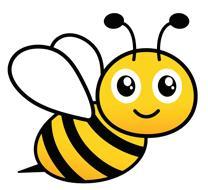















Read the number. Draw the same number of cherries ( ) on the cakes.












Trace number 9 with your finger. Then trace it with crayons in different colours.










A baby bear places two pastries on a plate and goes to wash his hands.




While he is away, a naughty monkey picks up the pastries and hides them.
When the baby bear returns, he does not find his pastries.

Somebody has taken my pastries! I have zero pastries on my plate.




Can you help the baby bear find his pastries?

Encourage children to wash their hands before and after eating their meals.








Trace number 0 with your finger. Then trace it with crayons in different colours.
0 1


2
























5 0 0 zero























Trace number 10 with your finger. Then trace it with crayons in different colours.
2
1











Count and write.
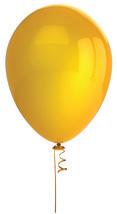















Help the bee go back to the hive. Count from 1 to 10 and draw a line to her hive.


1
2
3
9 10 5 8 6 7
4










Say the number under each jar. Draw that many cookies ( ) in the jar.





Write the missing numbers.

6 0 3 7 1 3 6 7 10









Count the objects and circle the correct number.














1 2 3 4 5















9 10 1 2 3 4 5 6 7 8 9 10 1 2 3 4 5 6 7 8 9 10









Trace and write the numbers from 1 to 10.











Count the things and write their numbers in the boxes given below.



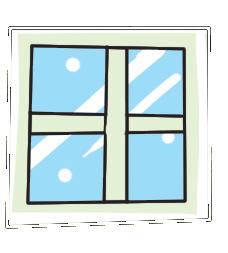













Look at the pictures. Find and circle the 8 differences.























































































The pencil is in the box.

The teddy bear is in the box.




The pencil is out of the box.

The teddy bear is out of the box.








Draw a ball in the box. Draw a pencil out of the box.

Circle the fruits that are out of the basket.





Encourage children to bring one fresh fruit in their lunchbox regularly to promote healthy eating habits.
Let’s go in-in-in, Let’s go out-out-out, Let’s go in-in-in, With a hurray and a shout. Let’s have fun together, Let’s have fun together, By moving in and out.










The cap is near the boy.

The ball is far from the boy.

The blue car is near the school.


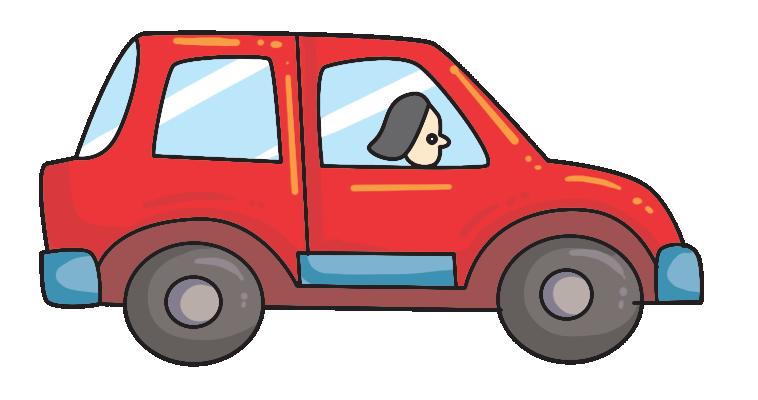
The red car is far from the school.








Paste the stickers of these things. Say which are near the ground and which are far.









TEACHER TIP
Let children sing the rhyme with actions.

Teddy Bear, Teddy Bear
Teddy Bear, Teddy Bear, Come to me.
Now we are near The big green tree.
Teddy Bear, Teddy Bear, Run to the car.
Now you and me Are very, very far.










The ball is on the table.

The ball is under the table.

The teddy bear is on the chair.



The teddy bear is under the chair.








Look at the picture. Circle the animal that is sitting on the tree.


Look at the picture. Circle the animal that is sitting under the table.



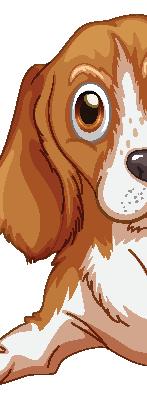




Put the ball on the chair, Hop two times like a hare! Hide the teddy under there, Wave your hands high in the air!










The boy is going up.

The boy is going down.











Tick (✓) the pictures of children who are up. Cross (✗) the pictures of children who are down.
















The girl is pointing to the left.

The boy is pointing to the right.
The green car is to the left.


The blue car is to the right.








Circle the thing on the left.

Circle the animal on the right.







Circle the fruit on the left.


Circle the bird on the right.





















A triangle has three sides and three corners. Trace the dots below.


We can see a triangle in these things. Say their names aloud.





I am a Triangle I am a triangle, Yes, its me. Count my sides: One, two, three.







Trace the triangles on the fish. Colour the fish.




Paste stickers of the objects that look like a triangle. (Use the sticker sheet.)









Count, trace and write.


































































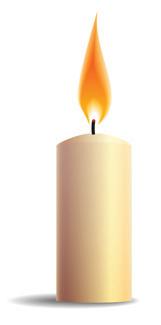















































Look at the pictures given below. Read the sentences aloud.


The kite comes after the ball. The balloon comes after the kite.


Circle the thing that comes after the cloud.


Circle the thing that comes after the car.



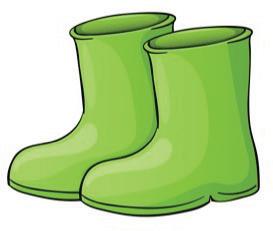









See and understand.
1 2 3 4 5 6 7 8 9
3 6


The number 4 comes after the number 3.
The number 7 comes after the number 6.

See and write the numbers that come after the given numbers.

6 4 8 1 5 3 4 7








Look at the pictures given below. Read the sentences aloud.
The circle comes before the triangle. The triangle comes before the square.


Circle the thing that comes before the tree.


Circle the thing that comes before the snail.



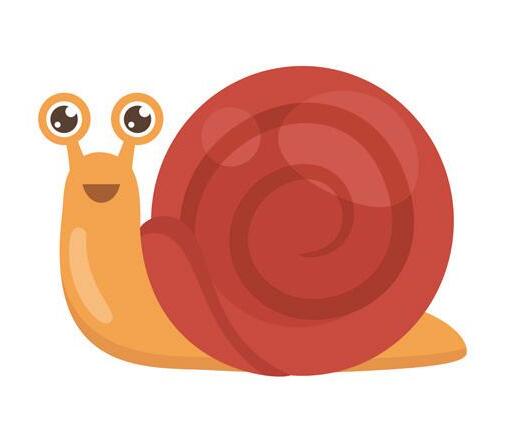








See and understand.
1 2 3 4 5 6 7 8 9
3 8 4 9 The number 3 comes before the number 4. The number 8 comes before the number 9.


See and write the numbers that come before the given numbers.
2 6 5 9


7 3








Look at the pictures given below. Read the sentences aloud.

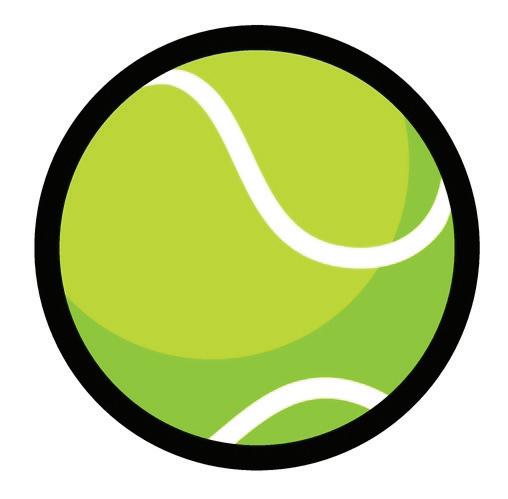


The ball is between the cap and the candle. The cup is between the candle and the pencil.



Circle the thing that is between the tree and the sun.


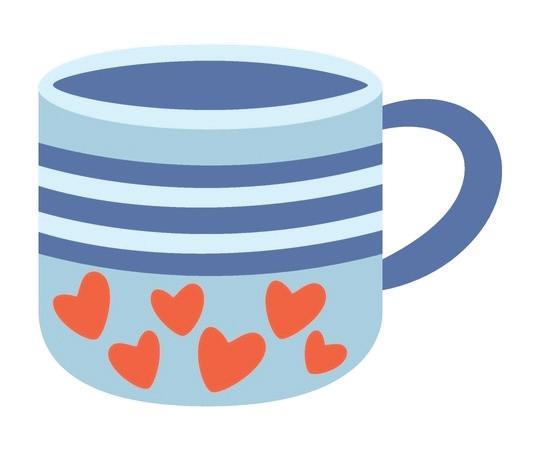

Circle the animal that is between the rabbit and the cat.












See and understand.
1 2 3 4 5 6 7 8 9 10
3 5 4 6 5 7


The number 4 is between the numbers 3 and 5. The number 6 is between the numbers 5 and 7.
See and write the numbers that come between the given numbers. 2 7 4 9 5 8 7 10 3 6 5 8










A rectangle has four sides and four corners. Two sides are long and two sides are short. Trace the dots.

We can see a rectangle in these things. Say their names aloud.

mobile phone




I am a Rectangle I am a rectangle, Sing my song. I have two sides short And two sides long.









Colour the rectangles and help the bear reach the den.



















Count, trace and write.

















































































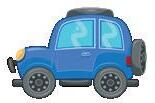


























Count, trace and write.











































Write the missing numbers from 1 to 20.
1
1 1 1 1 1 8 3 2 6 2 0 0 1 1
5
4 9








Numbers have names, just like us! Count the fingers and trace the number name.
1 one 2 two 3 three 4 four 5 five 6 six 7 seven 8 eight 9 nine 10 ten




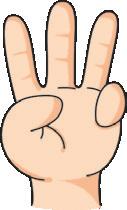
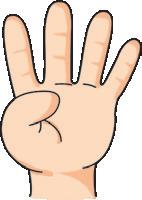



















Trace and colour the ovals.

We can see an oval in these objects. Say their names aloud.
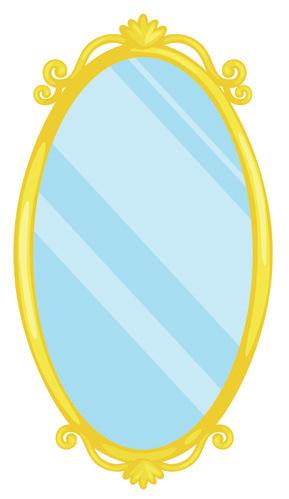

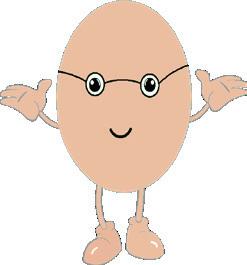


I am an Oval I am an oval, Look at me soon. I am shaped like an egg, or a balloon.








Find the ovals. Trace and colour them.













Match the shapes with the objects.















Say the names of these fruits.







You will find that they form a pattern. The next fruit after the apple will be banana according to this pattern.


Draw and colour to complete the patterns.







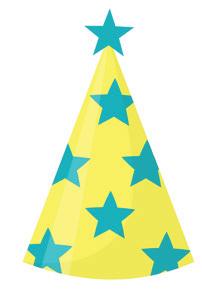














Count numbers from 10 to 1.

Now write the numbers from 10 to 1.

Join the dots from 10 to 1 and colour the picture.









Count the leaves and trace the number.





















22
23
24














Count the leaves and trace the number.

















































Write the numbers from 1 to 30.



0 0 0 1 2 3 1 1 2 1 1








Trace and colour the semicircles.

We can see a semicircle in these things. Say their names aloud.


I am a Semicircle I am a semicircle, half a round, Mushrooms grow on the ground.











Trace the dotted lines to complete the pictures, then colour them.
















Look at the picture. Circle the objects with different shapes. How many shapes can you find?



























































Count the leaves and trace the number.








































Count the leaves and trace the number. 36














































37
39








Write the numbers from 1 to 40.

1 1 2 3 1 1 1


1 2 3 4 0 0 0 0







Count the leaves and trace the number.



































42
43
44







Count the leaves and trace the number.






























































Write numbers from 1 to 50.
1 1 2 3 4 5 0 0 0 0 0 1 2 3 4 1 1 1 1



Numbers fly like birds so high, Up they go across the sky.
Thirty, forty, shining bright, Fifty, sixty, what a sight!
Seventy, eighty, moving fast, Ninety, hundred—here at last. Numbers help us every day, Guiding us along the way.









Trace and write the numbers 5I to 60.
2 3 4 5 6 7 9
6







Trace and write the numbers 6I to 70.
6 6 6 6 6 6 6 6 6 7 2 3 4 6 7 9










Trace and write the numbers 7I to 80.
7 7 7 7 7 7 7 7 7 2 3 4 6 7 9







Trace and write the numbers 8I to 90.

2 3 4


6 7 9 9







Trace and write the numbers 9I to I00.
9 9 9 9 9 9 9 9 9 2 3 4 6 7 9



Same and Different Identifies objects that are the same and different
Big and Small Differentiates objects as big or small 3–4
Tall and Short Distinguishes between tall and short objects 5–6
Long and Short Distinguishes between long and short objects 7–8
Circle Identifies everyday objects that are circular 9–10
One-to-One Correspondence
Demonstrates one-to-one correspondence by matching one object to one number or item
Number Rhyme Recites the numbers 1 to 10 in sequence through rhymes and actions
Number 1 Recognises, traces, writes and associates the numeral 1 with the quantity one
Number 2 Recognises, trace, writes and associates the numeral 2 with the quantity two 14
Number 3
Recognises, traces, writes and associates the numeral 3 with the quantity three 15–16
Number 4 Recognises, traces, writes and associates the numeral 4 with the quantity four 17
Number 5 Recognises, traces, writes and associates the numeral 5 with the quantity five 18–20
Front and Back Differentiates between the front and back of objects correctly 21–22
Heavy and Light Differentiates between heavy and light objects 23–24
More or Less Compares groups of objects to identify more or less 25–26
Full and Empty Differentiates between full and empty objects 27–28
The Rat and the Cake Listens and responds to simple questions about the story 29–30
Square Identifies everyday objects that are square-shaped 31–32
Number 6 Recognises, traces, writes and associates the numeral 6 with the quantity six
Number 7 Recognises, traces, writes and associates the numeral 7 with the quantity seven
Number 8 Recognises, traces, writes and associates the numeral 8 with quantity eight
Number 9 Recognises, traces, writes and associates the numeral 9 with the quantity nine



Story on Number 0 Retells the story and explains the concept of zero
Number 0 Recognises, traces, writes and associates the numeral 0 with the quantity zero 39
Number 10
In and Out
Far and Near
On and Under
Up and Down
Recognises, traces, writes and associates the numeral 10 with the quantity ten 40
Counts and writes the numbers from 1–10 41–45
Understands the concept of ‘in’ and ‘out’ through objects and activities 48–49
Understands and identifies the concept of ‘far’ and ‘near’ using objects and surroundings 50–51
Identifies and demonstrates the concept of ‘on’ and ‘under’ using objects 52–53
Understands and demonstrates the concept of ‘up’ and ‘down’ through objects and actions
54–55
Left and Right Differentiates the left side and right side of objects 56–57
Triangle Identifies everyday objects that are triangular 58–59
Number 11 Recognises, traces, writes and associates the numeral 11 with the quantity eleven
Number 12 Recognises, traces, writes and associates the numeral 12 with the quantity twelve
Number 13 Recognises, traces, writes and associates the numeral 13 with the quantity thirteen
Number 14
Number 15
Recognises, traces, writes and associates the numeral 14 with the quantity fourteen 63
Recognises, traces, writes and associates the numeral 15 with the quantity fifteen 64
What Comes After Identifies and writes numbers/objects that come after given numbers/objects 65–66
What Comes Before Identifies and writes numbers/objects that come before given numbers/objects 67–68
What Comes Between Identifies and writes numbers/objects that come in between given numbers/objects 69–70
Rectangle Identifies everyday objects that are rectangle in shape 71–72
Number 16 Recognises, traces, writes and associates the numeral 16 with the quantity sixteen 73
Number 17
Recognises, traces, writes and associates the numeral 17 with the quantity seventeen
Number 18 Recognises, traces, writes and associates the numeral 18 with the quantity eighteen
Number 19
Recognises, traces, writes and associates the numeral 19 with the quantity nineteen
Number 20 Recognises, traces, writes and associates the numeral 20 with the quantity twenty
Number Name (1–10) Traces the number names 1–10


Oval Identifies everyday objects that are oval
Patterns Completes pattern sequences
Backward Counting Writes numbers in the reverse sequence from 10 to 1
Numbers 21 to 25 Traces and writes the numerals 21–25
Numbers 26 to 30 Traces and writes the numerals 26–30
Writes the missing numbers between 1 to 30
Semicircle Identifies everyday objects that are semicircular
Numbers 31 to 35 Traces and writes the numerals 31–35
Numbers 36 to 40
Numbers 41 to 45
and writes the numerals 36–40
Writes the missing numbers between 1 to 40
and writes the numerals 41–45
Numbers 46 to 50 Traces and writes the numerals 46–50
Writes the missing numbers between 1 to 50
Numbers in the Sky Recites numbers through rhymes and actions
Numbers 51 to 60
Numbers 61 to 70
Numbers 71 to 80
Numbers 81 to 90
Numbers 91 to 100
and writes the numerals 51–60
and writes the numerals 61–70
and writes the numerals 71–80
and writes the numerals 81–90
and writes the numerals 91–100





Page No. 10




Page No. 19
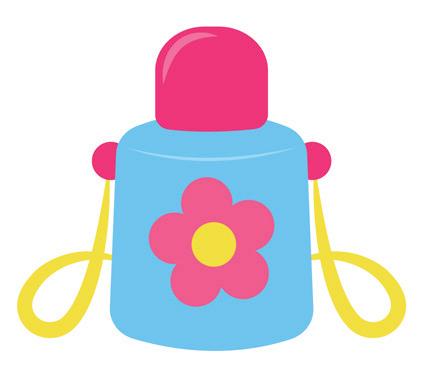
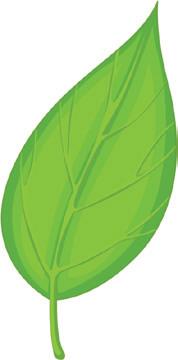












Page No. 28 Page No. 24










Page No. 51 Page No. 32 Page No. 59




DAWN is a comprehensive, NCF 2022-based Early Childhood Education program that lays a solid foundation for lifelong well-being and holistic growth, encompassing physical, cognitive, and socio-emotional development.
This Numeracy Skillbook is specifically designed to develop essential maths skills, including pre-number and number concepts, one-to-one correspondence, sorting, comparing, classification, logical sequencing, and pattern recognition.
Additional Resources
• Sticker Sheets
• TLM and Flashcards
• Charts and Posters
• Assessment Sheets
• Holistic Progress Card
• Teacher's Manual
• Digital Resources
• Play-based learning activities, which promote holistic development of the child in all ECE domains
• School readiness, which is assured in the curriculum and learning design
• All-round development, in areas of physical, cognitive, cultural and socio-emotional domains
• Teacher assets, like assessment tools and lesson plans to help maximise program quality and outcomes
Uolo partners with K-12 schools to provide technology-enabled learning programs. We believe that pedagogy and technology must come together to deliver scalable learning experiences that generate measurable outcomes. Uolo is trusted by over 15,000+ schools across India, Southeast Asia and the Middle East.
Not to be sold separately
ISBN 978-81-980375-3-4
